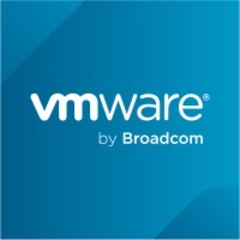What is our primary use case?
Firstly, we use it to provide an infrastructure for a development environment. Secondly, we use it to provide services to end-users. A kind of clustered services, where underneath, there are plenty of virtual machines. Thirdly, these solutions were chosen because of the easy way of providing backups and zero downtime between accidents and issues.
What is most valuable?
VMware vSphere provides an easy way of providing near-zero downtime services, the operation of the instances between clustered services, and providing the projected SLA for our customers.
Mostly, we use a gap solution for PaaS and IaaS levels of solutions. We also use Kubernetes on the application layer and downtime to move to a different layer of workloads.
However, we still use plain virtual machine platform environments because we are leveraging just on-premise servers. We can't, or we don't want to fully move into clouds. That's why it's important for us to use a solution like VMware vSphere.
What needs improvement?
I'm not aware of every option that our solution provides, but I see mostly two things. Provide a better solution for hybrid clouds and migration to the cloud. That could be one thing. The second one is providing some integration with different solutions at the application level, such as Kubernetes.
There is always a problem that the application level solutions are not aware of lower levels of infrastructure, of architecture. Some bundled applications with a stack of new VMs with better templates, including the deployment of such things. Monitoring could also be improved.
For how long have I used the solution?
I have been using VMware vSphere for more than 10 years.
What do I think about the stability of the solution?
I think it's stable. We have encountered a major issue twice during the last four or five years. But it was not related only to vSphere but solutions like extensions to the software we use.
However, there was no downtime, there was some issue, but I would say that the solution is quite stable. We have been using it for a few years without any major incidents that I am aware of.
What do I think about the scalability of the solution?
To my knowledge, it's quite scalable and elastic in terms of providing bigger throughputs and managing higher volumes of requests at the end, but our cases currently are not like the biggest.
I think most of the solutions available right now are set up for the infrastructure. The hardware is enough for the performance level we want to have. It's enough, and if we wanted to improve it, there is space for that.
However, I can tell you that this solution was stable in my first project. Between 2010 and 2014, at a different company, the solution provided everything that I needed at that moment. There were no problems with scaling this solution.
However, we had problems with the hardware limits. We reached the limit, but it was quite good with vSphere solutions because even if we reached the point of having no hardware, like memory and computers, we managed to provide stable workloads for our customers. We gained the level of performance we wanted to have.
We were dealing with a complex situation dynamically, and the solution provided us with the tools, and the scalability was not an issue. However, we had problems with the hardware limits.
How are customer service and technical support?
The support could be better when it comes to opening and responding to a ticket. But it was within a reasonable time. However, I'm don't have direct contact with the support, and my team's not giving me information about any issues.
Which solution did I use previously and why did I switch?
My experience was with the public sector. That was rather complex from the start. In my previous experiences, if we wanted to use vSphere, that was after we tried some different techniques, and we had reached the limit of it or the complexity of the setup.
That's why we wanted to move to simplify it. The setup was immature, and we needed to provide better service for customers. That's why we choose to use vSphere. The complex one was the other option.
How was the initial setup?
The setup takes about one or two days or something in-between.
What's my experience with pricing, setup cost, and licensing?
VMware vSphere is a top enterprise solution, so we pay the price for a major product. We use vSphere because when we get the project, the customers were already using it. But currently, for example, if we have a new project and we are setting up our environment, and we have no constraints about the technology, like using vSphere, we rather go for Proxmox.
We are using it because it was already there before. The cost of migration, for example, is too high to move into different solutions, and the cost of keeping it is enough, and so we accept it.
Overall, I would like to have cheaper licensing costs and maybe a different policy for licensing. However, we don't see that as a big issue because we are paying for a good solution.
That's why I think it's a fair price. We are using it on the production side, and everything is good from our experience. That's why I would say that the cost isn't too high. However, it would always be nice if it was cheaper.
Which other solutions did I evaluate?
Proxmox is cost-effective and good. For example, if we have some projects where the hardware is provided by our customers, and we can use any technology we want.
Proxmox, in most cases, is good for creating some development and staging environment. Because it's cost-effective, we can afford to have a solution based on that technology.
In most cases, I know that it's not limiting us in terms of the operating systems we use, and my team is quite happy when using such solutions. But it's not the production solution that we use at the end. It's mostly temporary for a few months, and we are using it because of the cost and because there will be an easy way to deploy. We can start to use it and move our environment between the projects. It's quite easy and quite quick.
With different technologies like Grafana, we gain information from infrastructure and application-level from different sources, and we integrate it into a different solution.
However, monitoring information could always be improved. Integrating with the application level could be improved, and monitoring could also be extended to that. Providing us with a more complex and just a one-click solution for seeing everything, how the infrastructure and how integrations are behaving, and the levels of infrastructure and application services would be a nice solution to have.
What other advice do I have?
I think the decision needs to be made by the architects of the solution. They need to be aware of the cost of such solutions, their requirements, and the constraints of such technologies. From a technological point, it's always a good solution. However, it might not be the best solution in terms of the total cost of ownership, and maybe there are better solutions like Proxmox.
I would give VMware vSphere a solid eight out of ten.
Which deployment model are you using for this solution?
On-premises
Disclosure: My company has a business relationship with this vendor other than being a customer. partner
















